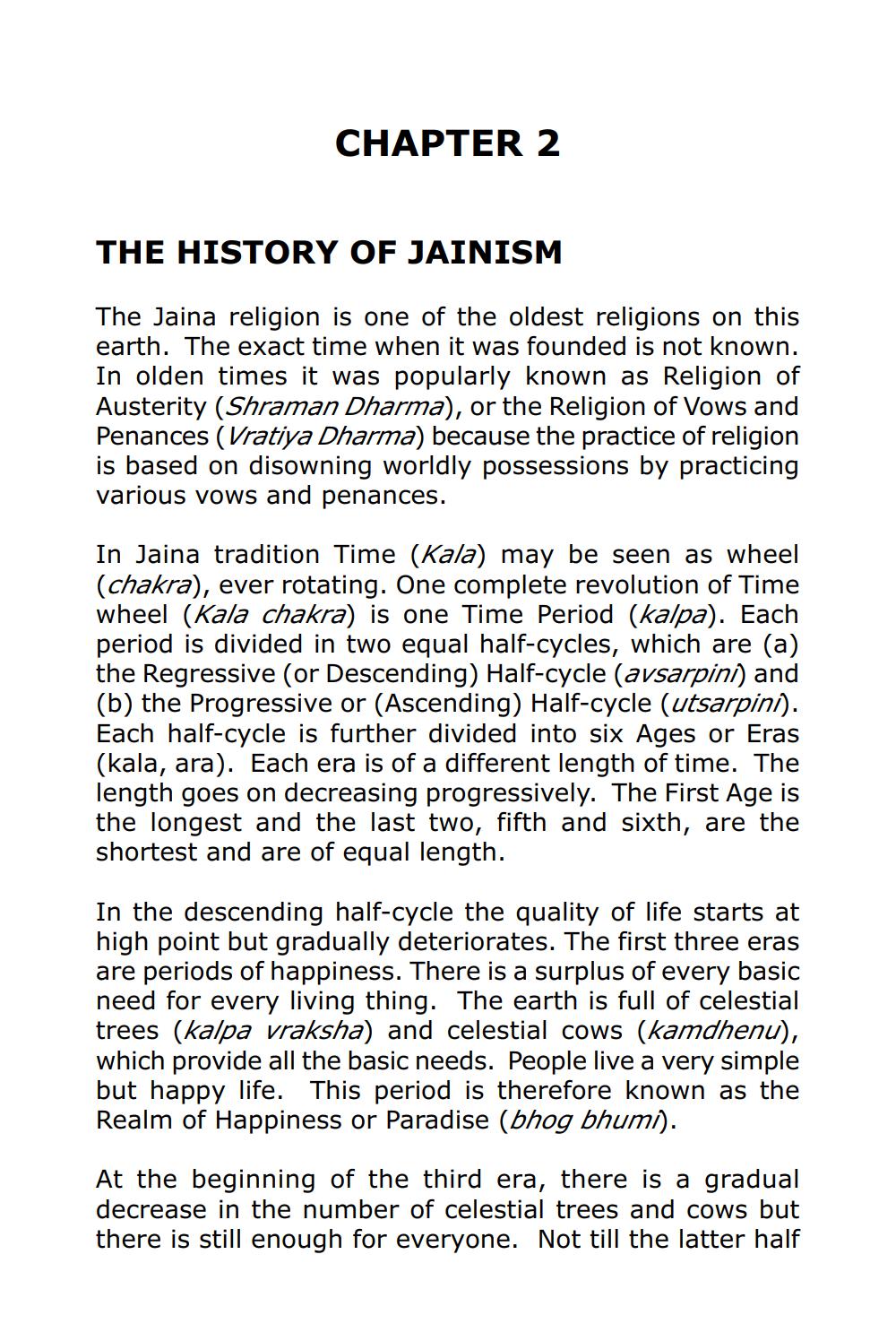________________
CHAPTER 2
THE HISTORY OF JAINISM
The Jaina religion is one of the oldest religions on this earth. The exact time when it was founded is not known. In olden times it was popularly known as Religion of Austerity (Shraman Dharma), or the Religion of Vows and Penances (Vratiya Dharma) because the practice of religion is based on disowning worldly possessions by practicing various vows and penances.
In Jaina tradition Time (Kala) may be seen as wheel (chakra), ever rotating. One complete revolution of Time wheel (Kala chakra) is one Time Period (kalpa). Each period is divided in two equal half-cycles, which are (a) the Regressive (or Descending) Half-cycle (avsarpini) and (b) the Progressive or (Ascending) Half-cycle (utsarpini). Each half-cycle is further divided into six Ages or Eras (kala, ara). Each era is of a different length of time. The length goes on decreasing progressively. The First Age is the longest and the last two, fifth and sixth, are the shortest and are of equal length.
In the descending half-cycle the quality of life starts at high point but gradually deteriorates. The first three eras are periods of happiness. There is a surplus of every basic need for every living thing. The earth is full of celestial trees (kalpa vraksha) and celestial cows (kamdhenu), which provide all the basic needs. People live a very simple but happy life. This period is therefore known as the Realm of Happiness or Paradise (bhog bhumi).
At the beginning of the third era, there is a gradual decrease in the number of celestial trees and cows but there is still enough for everyone. Not till the latter half




